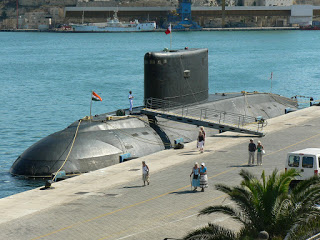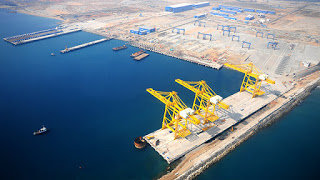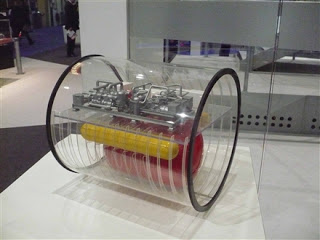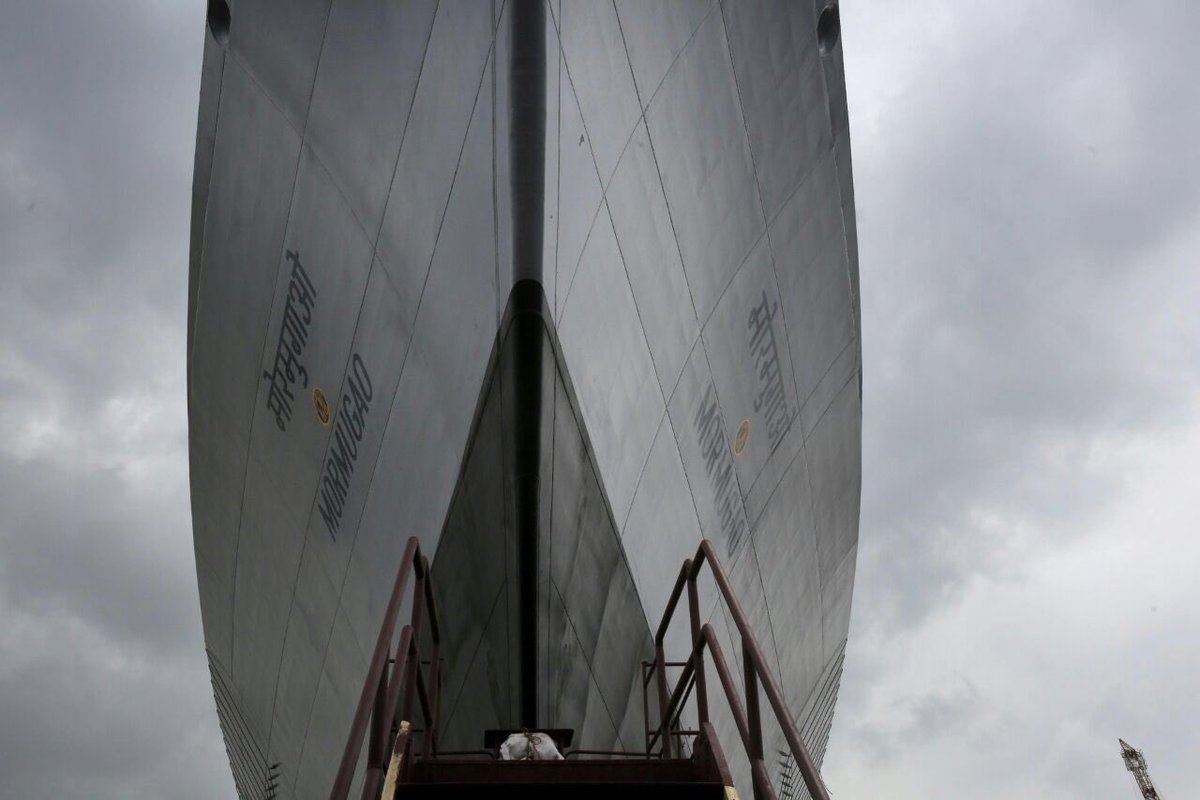INS Vikrant - Designed by Directorate of Naval Design, Indian Navy
by Abhishek Das
Indian Navy, the maritime wing of the Indian Armed Forces have been guarding our borders and its surrounding exclusive economic zones of the vast Indian Ocean Region (IOR) very effectively for the last 70 years. It has seen lot of ups and downs during its 69 years of long journey.
The Indian Navy is already a blue water force, as may be seen in its wide operational footprint and full-spectrum capabilities. Today, the Indian Navy operates a balanced force comprising aircraft carriers, multi-role destroyers and frigates, fleet tankers, offshore patrol vessels, amphibious ships and a multitude of aviation and underwater combatants, capable of both blue water and littoral operations. These enable the Navy to undertake multiple activities under its military, diplomatic, constabulary and benign roles, to promote and protect India’s maritime interests.
The Navy’s roles and responsibilities have expanded significantly over the years, in response to changing geo-economic and geo-strategic circumstances. In order to meet the entire spectrum of challenges, our force structure planning is dictated primarily by capabilities to be achieved, threat perceptions in the prevailing maritime security environment, emerging technologies, and the availability of funds.
In overall terms, our fleet is young, while there are some gaps in certain niche areas such as minesweepers, submarines, and multi-role and utility helicopters. The Government is seized of these issues and impetus has been accorded to overcome the delays and progress all pending cases in a time-bound manner. We have 47 ships and submarines under construction, which will be inducted progressively into the Navy.
The question arises ‘Can India compete the Chinese maritime power at sea? If we analyse the naval build up of India carefully, then it is very clear that it is not going to surrender to the Chinese. It is not only preparing to counter the Chinese but it is preparing to counter any major naval force also. India aspires to become a global power just like China, and for that it needs a strong Navy which it has realised of late.
Let’s take a look what India is building for its Navy to make it a global blue water force :
In this article I will try to list out all the main warships, submarines, weapon & defence systems and supporting technologies that are being/to be acquired by the Indian Navy down the years. Please note that existing systems are NOT MENTIONED unless they are of a class that is still being built-up or have some major upgrade program that needs to be mentioned.
PART - I
Main Surface Combatants
Project-15B Bangalore-Class Destroyers

image hosting over 10mb
CGI concept of Bangalore-Class Destroyer
An improved version of Kolkata-class. 4 ships planned, 1st one's hull almost complete. First major warship-class to be built after MDL received much-needed upgrades in terms of modular construction.
Carries 16 x BrahMos anti-ship/land-attack cruise missiles (will be replaced with Mach 7-8 BrahMos-II once that's ready) and 48-64 SAMs (Barak-8/8ER), all contained in VLS cells. A new CIWS cannon should be inducted by the time these ships are doing sea trials. MF-STAR AESA multifunction radar and RAWL-02/RAN-40L search radar with EMDINA Combat management system will be integrated. BEL HUMSA-NG sonar suite will be standard.
Project-15A Kolkata-Class Destroyers

photo hosting
The most powerful warship built in India so far. 3 ships planned, 1st one inducted & commissioned earlier this month. 2nd & 3rd ones will follow next year. Armament suite includes 16 BrahMos-1 cruise missiles and 32 (according to some, 64; with 32 additional reloads) Barak-8 SAMs, all VLS-based. Comes with 4 CIWS cannons of 30mm caliber and a 76mm main SRGM.
Radars are the same as P-15B as are CMS and Sonar suites, albeit P-15B might be using more advanced/later versions. Full load displacement quoted as 7,400 tons.
Hangars for 2 large helicopters are available : the competition of 12-ton Multirole choppers for DDGs should begin soon with the competitors being CH-148 Cyclone and AW-101. Winning helos could be armed with light anti-ship missiles such as Kongsberg NSM, and will have their own torpedos & dunking sonars. It's also the same for P-15B.
Project-15 Delhi-Class Destroyers Upgrade*

screenshot tool
The 3 existing Delhi-class destroyers, each with 6,900 tons of displacement and currently carrying 16 cruise missiles and 80 surface-to-air missiles will be upgraded with the MF-STAR multifunction radar, new EMDINA combat management suite and new sonars. The 16 Kh-35 Switchblade/Uran-E missiles will be replaced with tube-launched BrahMos-1 while the 42 Shtil-1 (9M317M) SAMs will be replaced by Barak-8, the 32 Barak-1 being retained with upgrades.
Project-17A Frigates
Much-improved versions of Shivalik-class FFG. Total 7 planned for construction at two different shipyards (4 at MDL and 3 at GRSE), this number could grow to 10 if an additional 3 Talwar-class frigates are not ordered. The frigates will have largely the same radars & CMS, sonar suites as the P-15B destroyers - like the MF-STAR multifunction radar and HUMSA-NG hull-mounted sonar array.
Armament will consist of 8 cruise missiles (BrahMos-1/2) and 32 surface-to-air missiles (Barak-

, all launched from VLS cells. Fully conceled torpedo tubes and redesigned flush deck to reduce radar & acoustic signature will be implemented. Full load displacement could be between 6,200 and 6,800 tons.
New CIWS cannons and 76mm/127mm SRGM will be equipped in likely redesigned turrets.
Talwar (Krivak-IV)-Class Frigates

imag
Adding to the 6 already in service, another 3 to be ordered from Russia as Batch-III with some upgrades to the combat management system. Armament suite of 8 BrahMos cruise missiles and 24 9M317M SAMs will be retained.
Project-28 Kamorta-Class ASW Corvettes

screen shot pc
New-generation corvettes with an emphasis on anti-submarine warfare. Total 4 planned, 1st one commissioned earlier this month. The design includes advanced X-form hull (a first in India) and several radar, acoustic, and Infra-Red suppression measures. The corvette, with a full load displacement of 3,400 tons is geared for ASW missions with an array of torpedos, hull-mounted & towed-array sonars and several processing stations dedicated for submarine-hunting. The ship would receive a 16-cell Barak-1 SAM suite in the future. The capability to launch an anti-submarine version of the Klub missile through torpedo tubes is said to exist, with transfer of Klubs for Kamorta being documented in SIPRI, but such capability is not officially mentioned.
Another 8 corvettes of an improved design under Project-28A could be cleared for construction after the 3rd & 4th vessels (which will bring some new design developments as compared to 1st and 2nd ones) of present class are completed.
New Generation Corvettes
With the indigenous ship design agencies already jam-packed, the design for 16 new guided missile corvettes will be acquired from a European or Russian design agency and then they will be constructed in India with some modifications. Picture of Swedish Visby-class is only for depiction, although that design is most likely to be among the competitors.
*While the SLEP upgrade of P-15 Delhi destroyers is a sure thing to happen, the exact systems & weapons to be included in that upgrade are not yet confirmed so have that one with a pinch of salt.
Another matter that deserves mention is the possible upgrade of 3 existing Project-16A frigates with Maitri/Barak-1 SAMs and new electronic systems. Tube-launched BrahMos-1 cannot be ruled out either.
On top of the 7 new destroyers under P-15A/B, there are rumors of upto 8 to 12 more next-generation destroyers of a new design, with indigenous AESA-based multifunction radars and fully integrated masts. Then again, it's just a rumor, although defence analysts have confirmed that IN plans to have a fleet of 24 destroyers total.
PART - II
Aircraft Carriers, Support Ships & Amphibious Warfare Vessels
Project-71 IAC-1 (Vikrant-Class) Aircraft Carrier

adult photo hosting
The first carrier-class to be designed & built in India. The IAC-1 is a gas turbine-powered STOBAR configuration with MiG-29K and NLCA Tejas jet fighters outlined for operations from it's deck. It can carry a total 30 aircraft, including flight & hangar deck storage. Full-load displacement will be around 40,000 tons. The remainder of the air-wing consists of Ka-31 Helix-B AEW helicopters, Dhruv Mk.3 & Sea King transport/ASW helicopters. The Sea Kings will be replaced in due course by a new NMRH - most likely S-70B-2 Sea Hawk.
The electronics will consist of an MFSTAR multifunction AESA radar, a 3D AESA-based search radar (most likely RAN-40L), an indigenous combat management system, and a suite of BEL-built hull-mounted sonars. The ship will have it's own compliment of 32 Barak-8 SAMs as well as 4 CIWS mounts of 30mm caliber. The maximum speed under propulsion is quoted as 30 knots.
Currently the carrier's hull is almost complete and according to sources, propulsion has been integrated. The ship is being built using modular methods, with the 'island' superstructure nearing completion as well and awaiting installation into place.
The Vikrant will be operated by the Eastern Naval Command.
Vikramaditya (Admiral Gorshkov/Kiev)-Class Aircraft Carrier

img host
Although the ship itself, displacing 45,500 tons and capable of carrying 26 aircraft in total, is inducted & operational with the Western Naval Command, there still remains the program to outfit it with Barak-8 SAMs and a new CIWS system. The Vikramaditya operates MiG-29K fighters & Ka-31 AEW, Dhruv, Sea King, Ka-28PL and Chetak helicopters.
Vishaal (IAC-2)-Class Aircraft Carrier

adult image upload
Although details remain sketchy, it can be said with almost-certainty that the IAC-2 will be built with the following features to boot : a displacement of around 65,000 tons (don't know for sure if full-load or not), CATOBAR configuration with the option of EMALS (US has already made clear it's offer) and nuclear propulsion using the same 180-200MW Pressurized Water Reactor (PWR) that is being developed for future submarine-classes.
The most sketchy part of the details remains the air-wing. It may consist of either a naval version of FGFA, or Rafale-M taking advantage of IAF's MMRCA deal, which will eventually be replaced by a naval AMCA. The CATOBAR configuration allows for the operation of aircraft such as E-2D Advanced Hawkeye and UCAVs. Little is known about the rest of this carrier.
Although only one has be contemplated so far, we can expect a 2nd ship of this class when the time comes to replace the Vikramaditya. The IN intends for a 3-carrier force, one for Bay of Bengal/China, one for Arabian Sea/Pakistan/Middle East and one on standby or in refit, and according to prominent defence analysts, the IN could standardize on Vishaal & improved designs of the same class by the time the Viki & IAC-1 are to be replaced or transferred into reserves...hinting at a 3rd ship of this class.
Landing Helicopter Docks
Competition for 4 LHDs, 2 of which will be bought from abroad and the remaining 2 built in India. As per the latest of unofficial reports, the Spanish Juan Carlos-I and the French Mistral-class ships are leading the fray for providing four vessels for the IN. Respectively they have displacements of 26,000 tons & 21,300 tons and can transport between 900+ troops & 40-46 main battle tanks along with a plethora of 20-30 helicopters from the flight deck.
Fleet Support Ships
The MoD had recently cleared the procurement of five large Fleet Support Ships (FSS) designed to accompany the CBGs or assist in other amphibious operations. The FSS are to have full-load displacements of around 40,000 tons and will be capable of both astern & abeam transfer of equipment & replenishments for at-sea naval warfare units. No data as yet about the possible competitors or exact method of acquisition. Most probably foreign design will be modified & built in India. Picture of DCNS BRAVE-class ship only for depiction, although that model is likely to be among the competition.
PART - III
Submarines (Nuclear & Conventional)
Ballistic Missile Submarines (SSBN)
S-5 "Avinash" Class
The S-5 are the definitive underwater deterrence platforms of the Indian nuclear triad. A total of 3 submarines of this class have been outlined, each one with a submerged displacement of approximately 20,000 tons and capable of carrying between 12 to 24 intercontinental ballistic missiles with Multiple Independently targeted Re-entry Vehicles (MIRVs). The K-5 SLBM with an estimated range of 6,500 to 8,500 kilometers is being developed for the purpose.
It is not known if the S-5 submarine-class will be made to carry BrahMos cruise missiles in their torpedo tubes for defence against warships.
The same "Shipbuilding Center" in Vizag on India's East Coast that is building the Arihant-class submarines will take up construction of the much larger S-5 afterwards. The vessels will be a powered by a new-generation 180-200MW pressurized water reactor being designed & developed by the DAE & BARC.
Cruise Missile Submarines (SSGN)
S-2 Arihant-Class
The 3 Arihant-class nuclear submarines (1st one currently undergoing sea trials with the 2nd one most probably being fitted out), originally built as SSBNs, will be converted to an SSGN role carrying the Nirbhay 1,000+ km land-attack cruise missiles & the BrahMos 300km anti-ship cruise missiles in it's silos and torpedo tubes.
It is estimated that each of an Arihant-class vessel's 4 silos can carry upto 5 Nirbhay missiles, giving a total of 20 such missiles in the silos, discounting any number that can also be carried in the torpedo tubes. The Arihant has a surfaced displacement of around 6,000 tons and an unspecified submerged displacement, estimated by unofficial sources as around 7,000 tons.
Attack Submarines (SSN)
The Indian Navy and the MoD have recently outlined a requirement for, to begin with, 6 attack submarines with nuclear propulsion. While it is estimated by naval analysts that this number could grow to anywhere between 9 to 18 in due course - the design of the submarine has not been revealed so far.
Considering various sources, it has been deduced that it would be one of three possible designs:
1) A slightly dowsized version of the Arihant-class design, but without any vertical SLBM launch silos & incorporating considerable acoustic-signature reduction measures
2) Based on a Russian Akula/Yasen-inspired design, with completely re-done interior & aesthetics
3) Based on the French DCNS Barracuda-class SSN design
All three offers would end up having the same reactor (derived from the one meant to go onboard S-5 SSBN). An approximate displacement of around 5,000 tons has been reportedly specified. The submarines will be capable of launching torpedos & anti-ship cruise missiles from the TTubes.
Conventional Attack Submarines (SSK)
Project-75I
The P-75I is a submarine tender which specifies the procurement of 6 advanced conventionally-powered submarines with fuel cell Air-Independent Propulsion (AIP) and the capability to launch BrahMos cruise missiles. While the details of the tender are already known, the choice of submarine, looking from a logistical & economic perspective, had better be the S80 Super Scorpene, which has a displacement of about 2,400 tons.
Scorpene-Class
The Mazagon Dock Ltd. (MDL) is currently engaged in building 6 of these advanced conventional submarines for the IN, each with a displacement of 1,560 tons, and the first one having been named INS Kalvari. The procurement has been repeatedly delayed with the first submarine expected to enter service in 2016. The order book is likely to be increase to 9 from the present 6 by next year.
The IN Scorpenes will be equipped to launch SM-39 Exocet anti-ship cruise missiles and an as-yet-unselected new-generation heavyweight torpedo, with the choices being the SeaHake Mod4 and the Black Shark.
Current prospects aim at 12 nuclear and 12-15 conventional submarines, with the nuclear number being capable of growing to anywhere upto 24. And the total number then grow upto 40 odd vessels. Indian Navy may have more than 40 submarines if it continues to upgrade present fleet of Sindhughosh class or Russian Kilo class Diesel electric vessels. They can be operated for another 20-25 years after their refit, hull modification and upgradation in weapons and sensor suite structure.
Conclusion
The Indian Navy is a builder’s navy with strong preference for indigenous capability builds-up in warship construction as well as sophisticated weapons, sensors and armament. Indian Navy has become adept at interfacing equipment sourced from very diverse origins and philosophies on its in house designed versatile ships. The Indian Navy, an ardent exponent of indigenization, has proactively collaborated with industry to accommodate Indian products, and has resorted to import only on operational or unavailability grounds.
The Indian Maritime Security Strategy is centered on shaping a favourable and positive maritime environment to effectively overcome the wide array of maritime challenges spread across the Indian Ocean.
 photo host
photo host


 image upload
image upload Rollout of the First Kalvari class Submarine in Mumbai.
Rollout of the First Kalvari class Submarine in Mumbai. An Indian Navy Kilo Class Submarine
An Indian Navy Kilo Class Submarine L&T's massive yard at Katupalli
L&T's massive yard at Katupalli  A Mockup of the DRDO AIP Module
A Mockup of the DRDO AIP Module Exide Batteries Submarine Cell
Exide Batteries Submarine Cell Varunastra test firing
Varunastra test firing 


 image hosting over 10mb
image hosting over 10mb photo hosting
photo hosting screenshot tool
screenshot tool imag
imag screen shot pc
screen shot pc adult photo hosting
adult photo hosting img host
img host adult image upload
adult image upload
